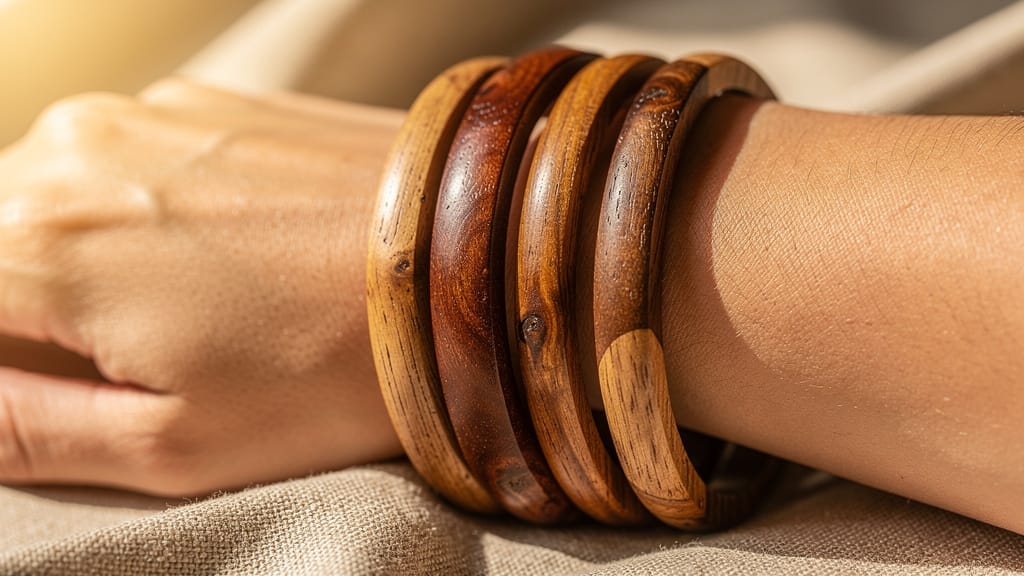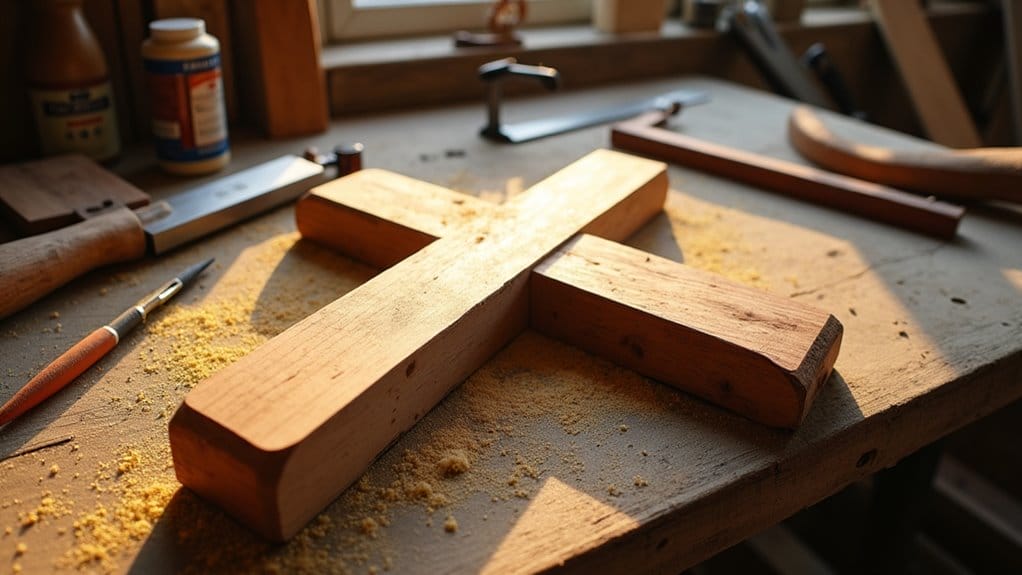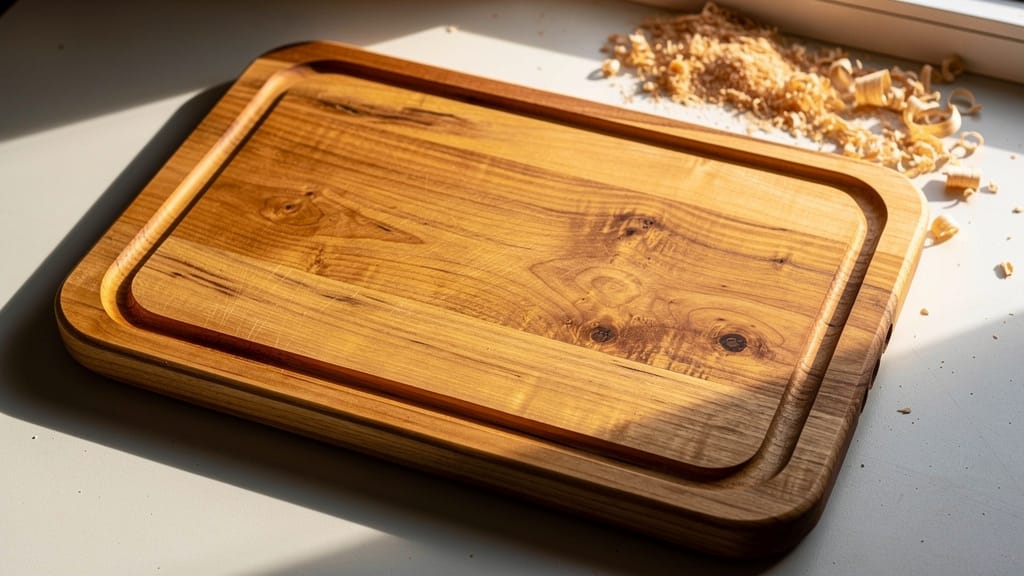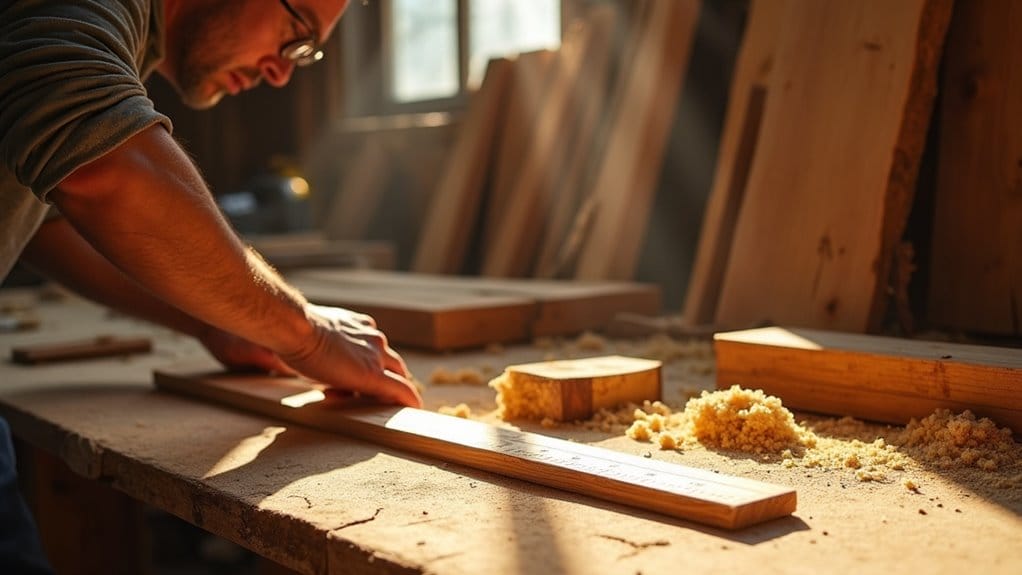When you’re choosing between wood and plastic cutting boards, you’ll find passionate advocates on both sides of the debate. Plastic boards have dominated kitchen stores for decades with promises of easy cleaning and dishwasher safety. But recent research has revealed surprising facts about wood’s natural defense mechanisms.
Are wood cutting boards safer than plastic? What you’ve been told about plastic’s superior hygiene might not be entirely accurate. The truth about which material better protects your family’s health lies in some fascinating scientific findings.
Key Takeaways
- Wood cutting boards have natural antimicrobial properties that kill bacteria over time. But plastic boards can harbor bacteria in knife grooves.
- Bacteria die faster on wood surfaces through absorption and desiccation. This makes wood inherently more hygienic than plastic.
- Hardwoods, like maple, exhibit superior bacterial resistance compared to plastic cutting boards.
- Plastic boards retain live bacteria in scratches even after cleaning. But properly maintained wood boards show better bacterial elimination.
- Wood boards preserve knife sharpness better and reduce cross-contamination risk. Both materials require proper cleaning and maintenance.
The Science Behind Bacterial Growth on Cutting Surfaces

Both wood and plastic cutting boards are common kitchen staples. Scientific research reveals surprising differences in how bacteria grow and survive on each surface.
Wood’s natural antimicrobial properties actually help eliminate bacteria over time. In contrast, plastic cutting surfaces can harbor dangerous pathogens in their deep grooves. This makes proper sanitation more challenging.
Studies show that hardwoods like maple are particularly effective at resisting bacterial growth. But plastic boards may retain live bacteria even after cleaning.
This makes wood cutting boards a potentially safer choice when properly maintained.
Are Wood Cutting Boards Safer Than Plastic?

Your choice between the two types of cutting boards affects more than just aesthetics. Wood’s natural antibacterial properties give it an edge over plastic’s tendency to harbor bacteria in knife-created grooves.
While both materials require proper cleaning, you can maintain wood’s safety advantage through regular oiling and surface care.
Whereas plastic boards may need replacement once they develop deep scratches.
Bacterial Growth and Resistance
Despite their smooth appearance, plastic cutting boards aren’t necessarily safer than wood when it comes to bacterial growth. When you chop on plastic boards, knife grooves can trap bacteria, making them harder to sanitize effectively.
In contrast, wood cutting boards possess natural antimicrobial properties. This helps eliminate harmful bacteria over time.
Research shows that bacteria die faster on wood surfaces. Because the material absorbs and desiccates the microorganisms. Hardwoods like maple are particularly effective at resisting bacterial growth compared to softer woods.
Wood’s natural properties give it a distinct advantage in preventing long-term bacterial contamination.
Surface Damage Over Time
Kitchen tools endure repeated use. Therefore, the surface integrity of cutting boards becomes a crucial factor in ensuring food safety.
Plastic boards develop deep knife grooves over time. This can harbor bacteria and make thorough cleaning difficult. In contrast, wooden boards demonstrate remarkable resilience. They tend to self-heal from minor cuts.
While both wood and plastic boards eventually show surface damage, plastic boards become less hygienic as scratches accumulate.
You should regularly inspect your cutting boards for wear and replace them when significant damage appears. This proactive approach helps maintain peak food safety in your kitchen.
Cross-Contamination Prevention Methods
When it comes to preventing cross-contamination, both cutting boards offer distinct advantages.
Use separate cutting boards for different food types to maximize safety. Wood boards work well for fruits and vegetables due to their natural antimicrobial properties.
Plastic cutting boards are ideal for raw meat, fish, and poultry. Consider using a color-coded system: red plastic boards for meat and green ones for produce.
This simple approach helps you avoid mixing surfaces that have come into contact with raw meat with those used for ready-to-eat foods.
Remember to replace any cutting board once it develops deep grooves.
Cleaning and Sanitization Effectiveness
Understanding how to clean and sanitize each type effectively makes a significant difference in food safety.
- You can put plastic boards in the dishwasher or use bleach solutions.
- Wood cutting boards require gentle cleaning with warm water and soap.
Don’t let this simpler cleaning method worry you. Wood’s natural antimicrobial properties actually help combat bacterial growth more effectively than plastic.
Research shows that properly maintained wood boards often harbor fewer live bacteria than plastic ones.
Maintenance and Longevity of Different Board Materials

To maximize the lifespan of your cutting board, follow specific care routines.
Cleaning Methods and Care
Proper maintenance of your cutting board greatly impacts its longevity and food safety.
For wood boards, you’ll need to wash with warm, soapy water and avoid submerging them. Regularly oiling prevents cracking and maintains hygiene. You can use food-grade and highly refined mineral oil.
Plastic boards offer easier sanitization options. You can run them through the dishwasher or use bleach solutions.
For both materials, thorough drying after cleaning is essential to prevent bacterial growth.
While each type requires different cleaning methods, consistent maintenance is key.
Signs of Board Replacement
Three clear signs indicate it’s time to replace your cutting board: deep knife grooves, visible cracks or splits, and persistent stains or odors.
These signs shouldn’t be ignored. They greatly increase your risk of bacterial contamination.
Regular maintenance can extend your board’s life. However, you’ll need to watch for visible wear, especially on plastic cutting boards, which can develop knife marks where harmful bacteria hide.
For wooden boards, check for splitting or weathering that could harbor dangerous pathogens.
Don’t wait until your board is severely damaged. Replacing it at the first signs of deterioration helps guarantee your food preparation stays safe.
Impact on Food Flavor and Knife Performance

Wood cutting boards offer you distinct advantages in food flavor management. They absorb unwanted tastes that might otherwise transfer between ingredients.
Wooden cutting boards naturally trap and isolate flavors. This prevents cross-contamination that could muddle your carefully crafted dishes.
You’ll also notice superior knife performance with wooden surfaces, particularly hardwood varieties like maple and walnut. These materials are gentler on your blade edges, requiring less frequent sharpening.
In contrast, plastic boards don’t absorb flavors and can accelerate knife dulling.
If you’re focused on maintaining sharp blades while enhancing your cooking experience, wood boards provide better tactile feedback and stability.
Making the Right Choice for Your Kitchen Needs

Choosing the right cutting board depends largely on your specific cooking habits and kitchen priorities. If you frequently prepare meats, a board made from more durable materials, like hard maple or walnut, may be ideal for you. In contrast, if you primarily chop vegetables and fruits, you might prefer a softer wood that’s gentle on your knife edges. Researching the best wood types for cutting boards can help you make an informed decision that suits both your culinary needs and the longevity of your kitchen tools.
If you frequently prepare raw meat, consider having both wooden and plastic boards. Plastic boards are dishwasher-safe and ideal for meat preparation. Wood’s natural antimicrobial properties make it excellent for produce and bread. Bamboo absorbs minimal moisture and resists knife scars. This makes it less prone to bacteria than other woods.
To prevent cross-contamination, dedicate specific boards to different food types.
When comparing wood vs plastic, remember that maintenance requirements differ. You’ll need to hand wash wooden boards with warm water and soap, while plastic boards can go in the dishwasher.
Final Words
Wood cutting boards are the safer, more hygienic choice for your kitchen when properly maintained. Both materials have their pros and cons. Wood’s natural antimicrobial properties and superior bacteria absorption make it particularly effective at reducing contamination risks.
Consider investing in quality hardwood boards. Remember to keep separate boards for different food types to maximize your kitchen safety.
Explore our complete range at Qlycheecrafts and be inspired by our unique expertise! Contact us for any custom requests or bulk orders.
Frequently Asked Questions
What Is the Safest Material for Cutting Boards?
Both wood and plastic can be safe. But hardwood maple boards offer natural antibacterial properties. Whatever you choose, maintain it properly and use separate boards for raw meat and produce.
Do Chefs Prefer Wood or Plastic Cutting Boards?
Most chefs prefer wood cutting boards for their durability and knife-friendly surface. But they’ll often keep plastic boards on hand specifically for raw meat prep due to easier sanitization.
Why Do Restaurants Not Use Wooden Cutting Boards?
Restaurants avoid wooden boards because they’re harder to sanitize, more expensive, and may not meet health codes. They prefer plastic boards that can be easily cleaned in dishwashers and replaced affordably.
What Are the Disadvantages of a Wooden Cutting Board?
Wooden cutting boards are harder to sanitize due to their porous surface. They can harbor bacteria in knife grooves, require special maintenance, and cannot be placed in dishwashers. They may develop stains, odors, and splinters over time.






































